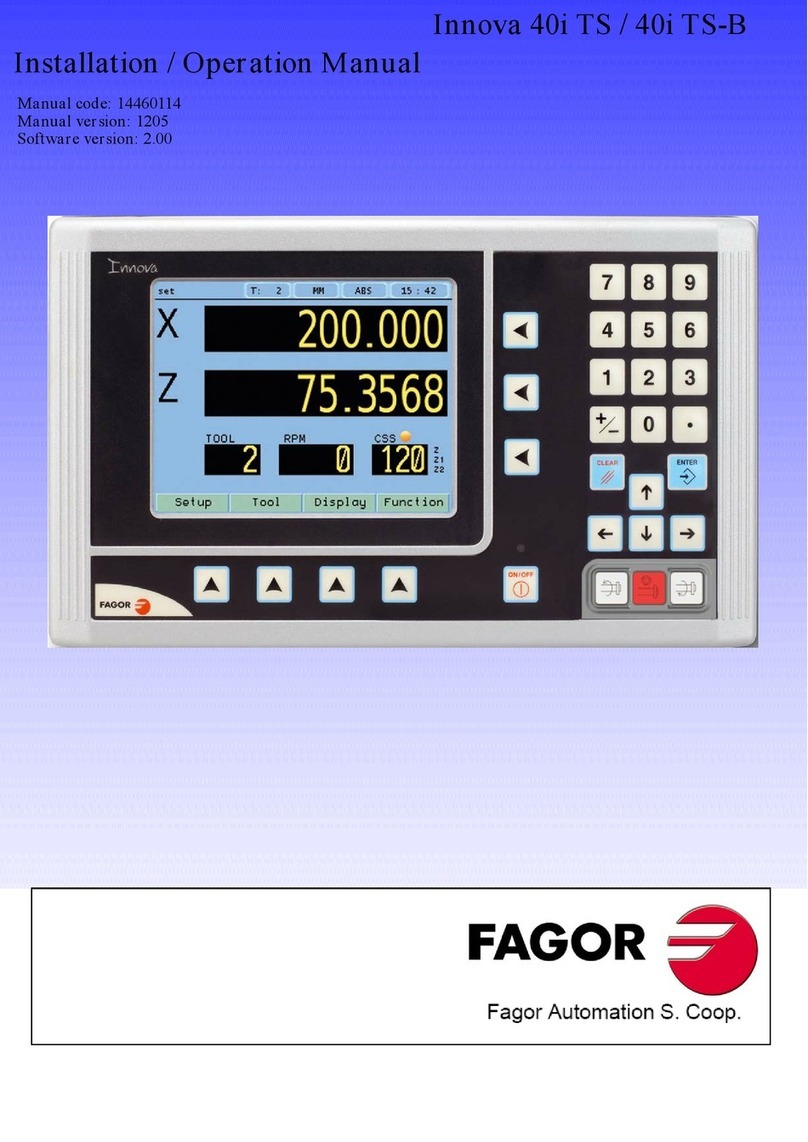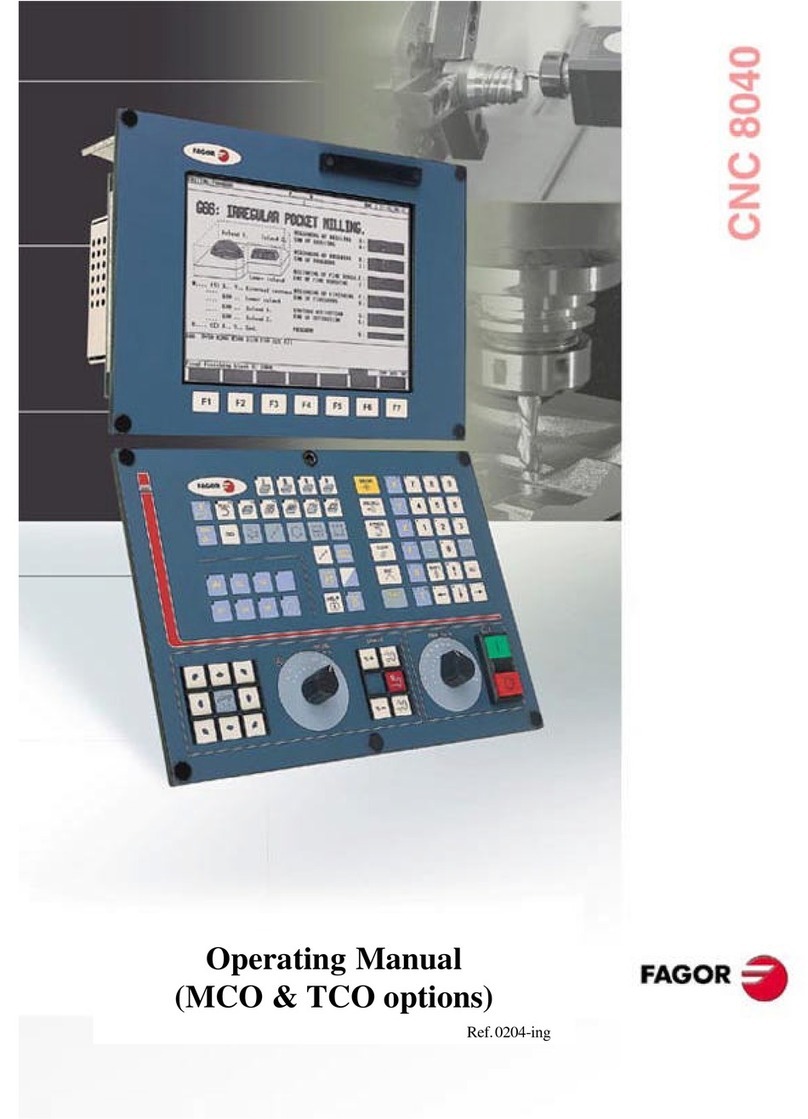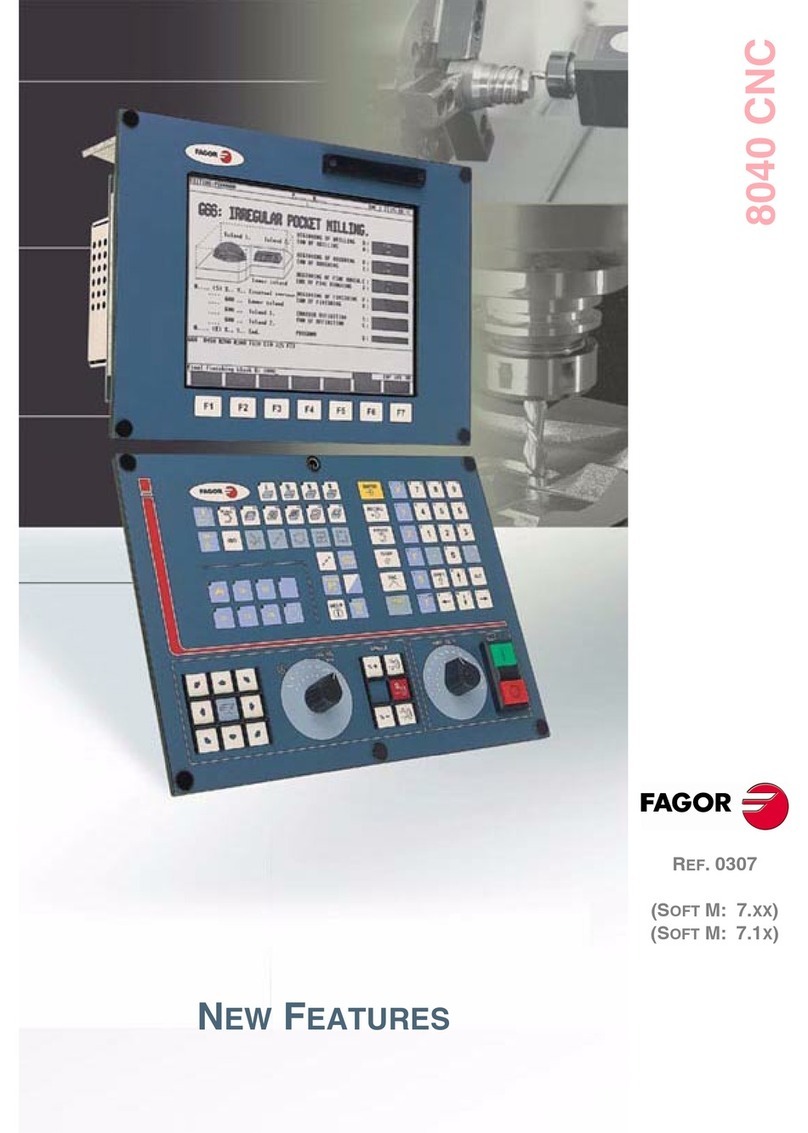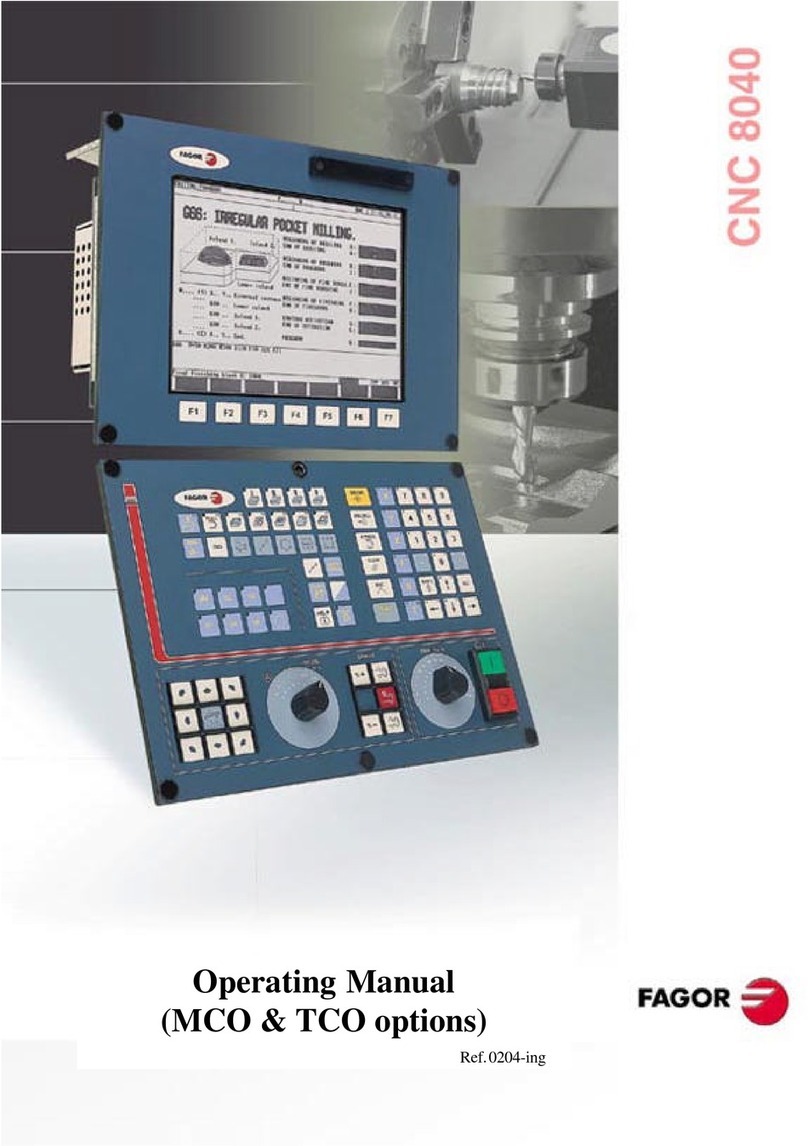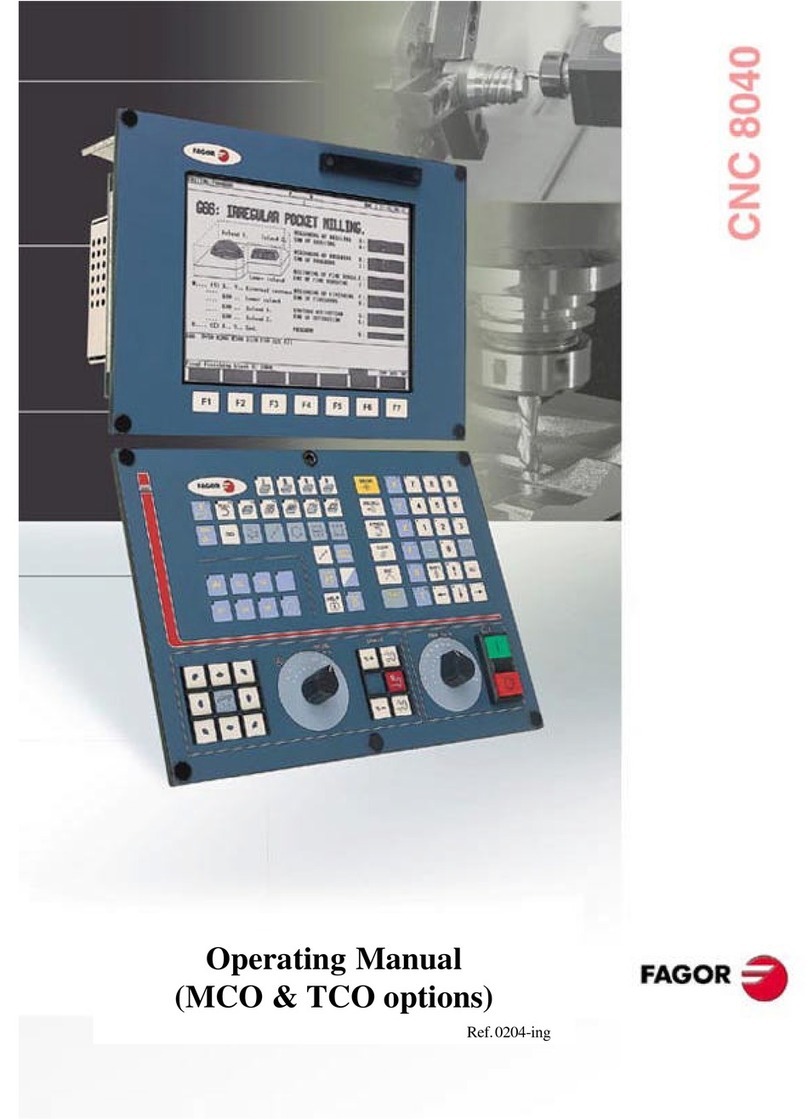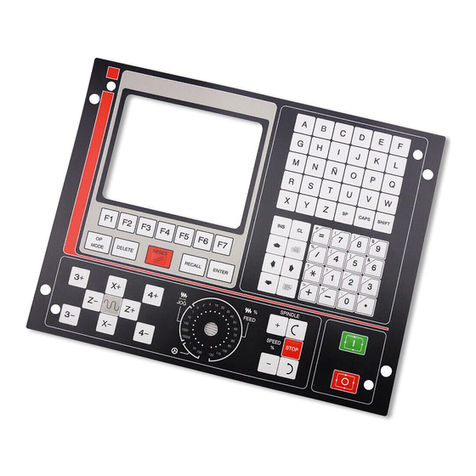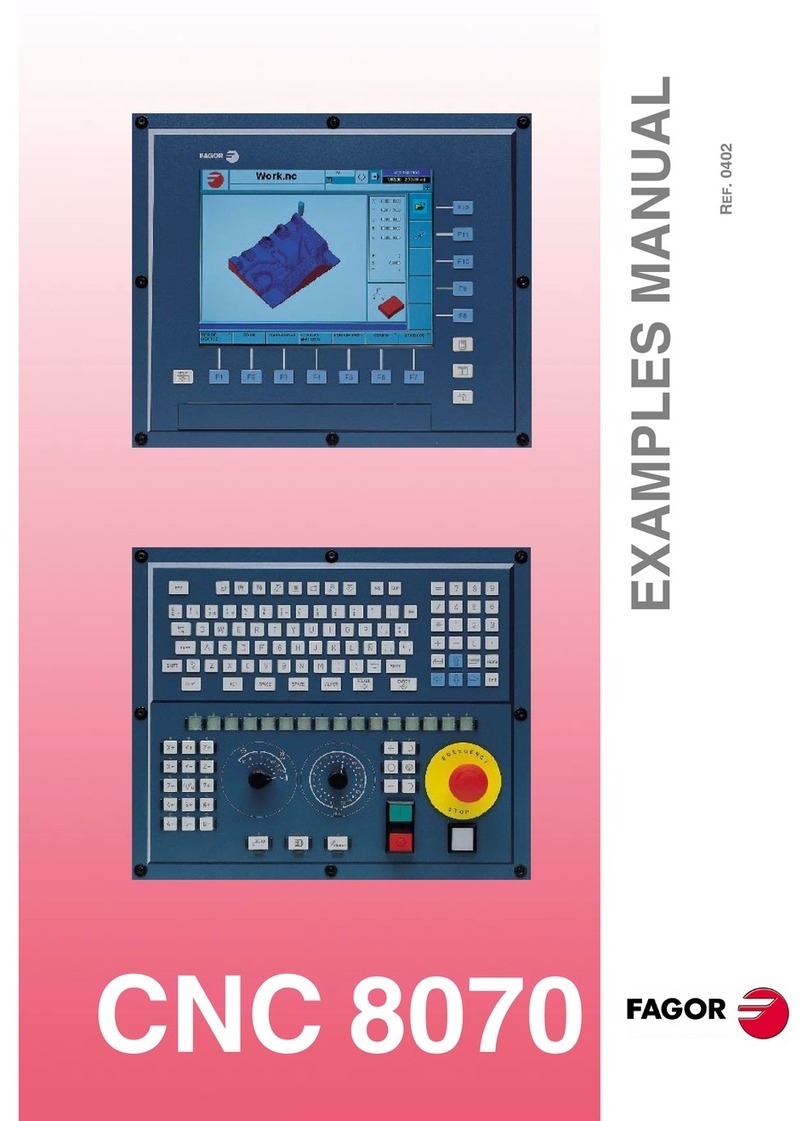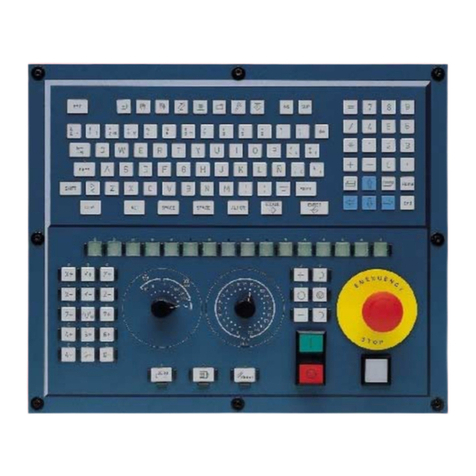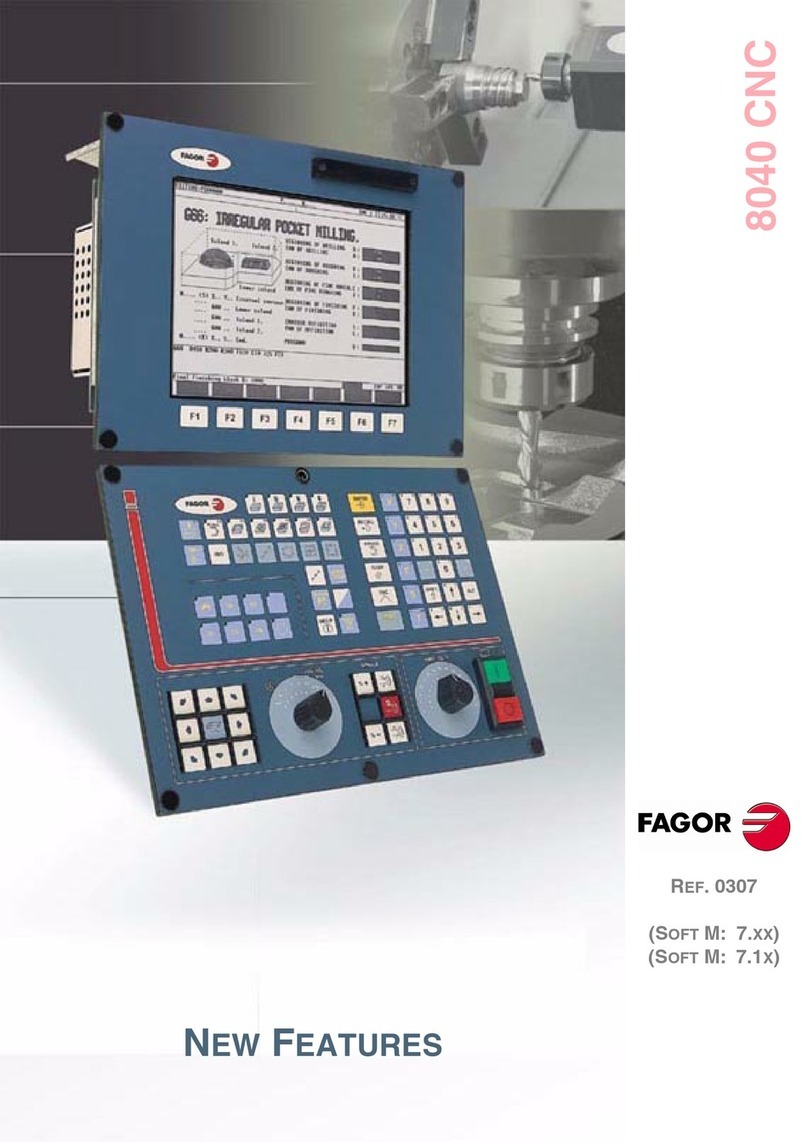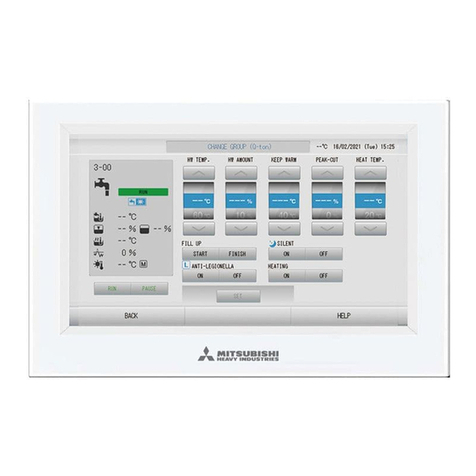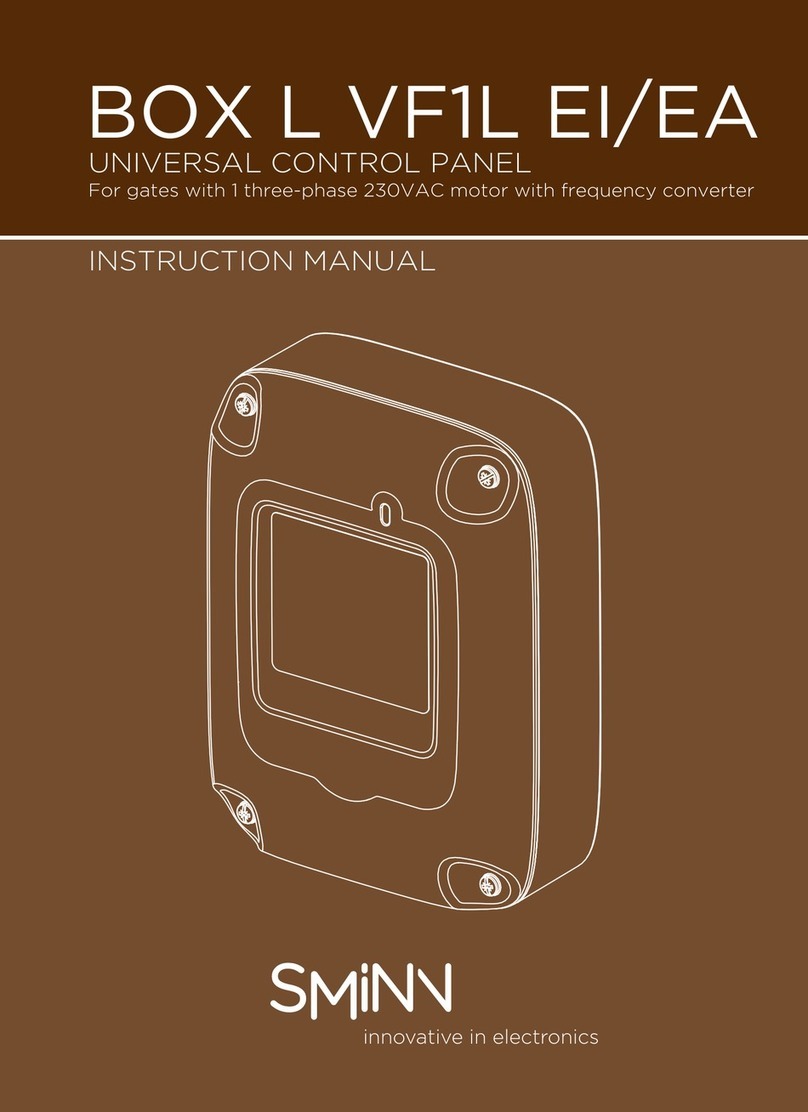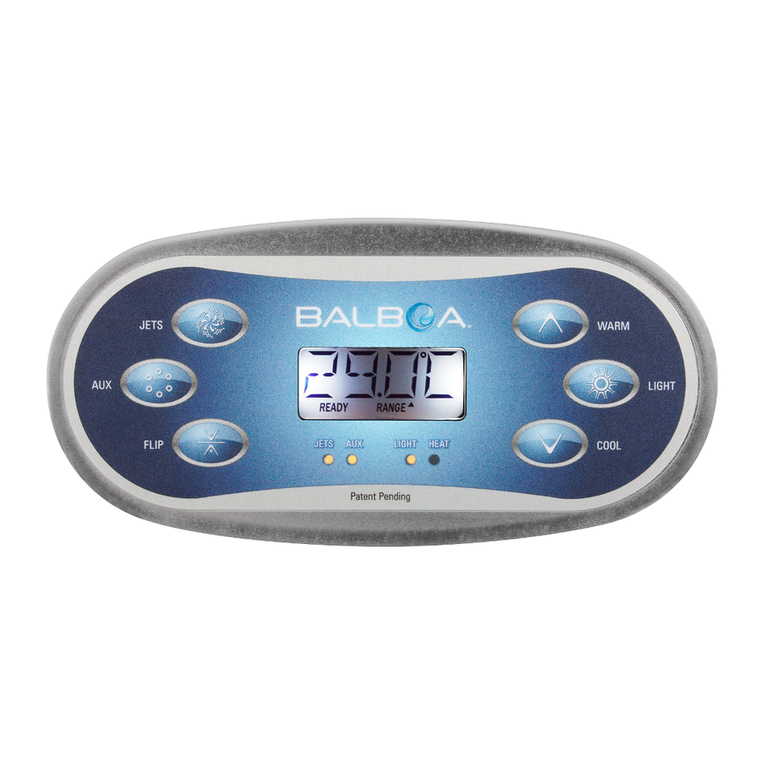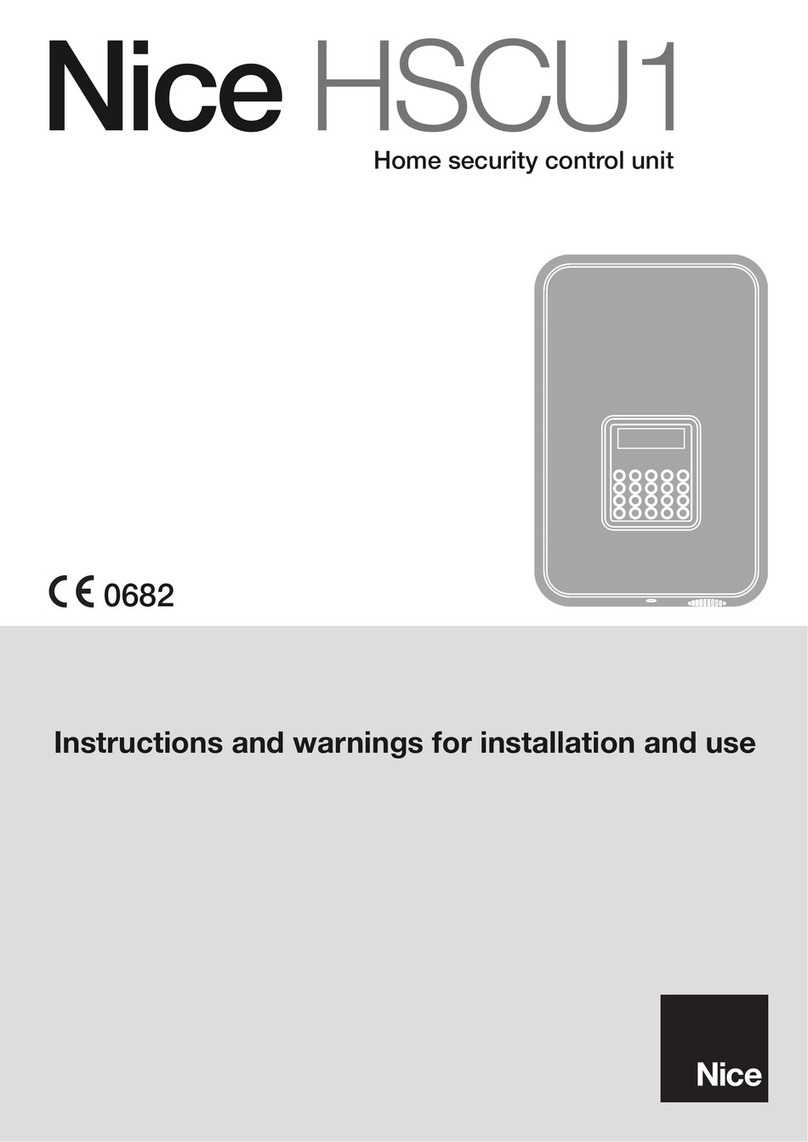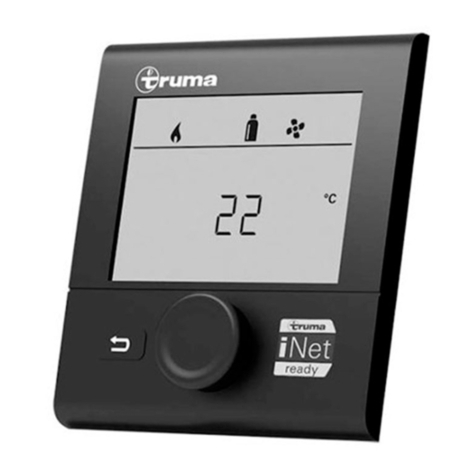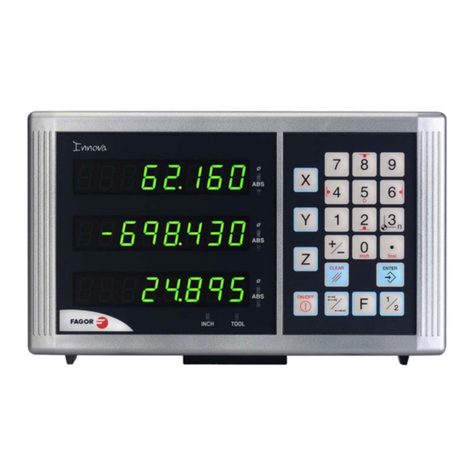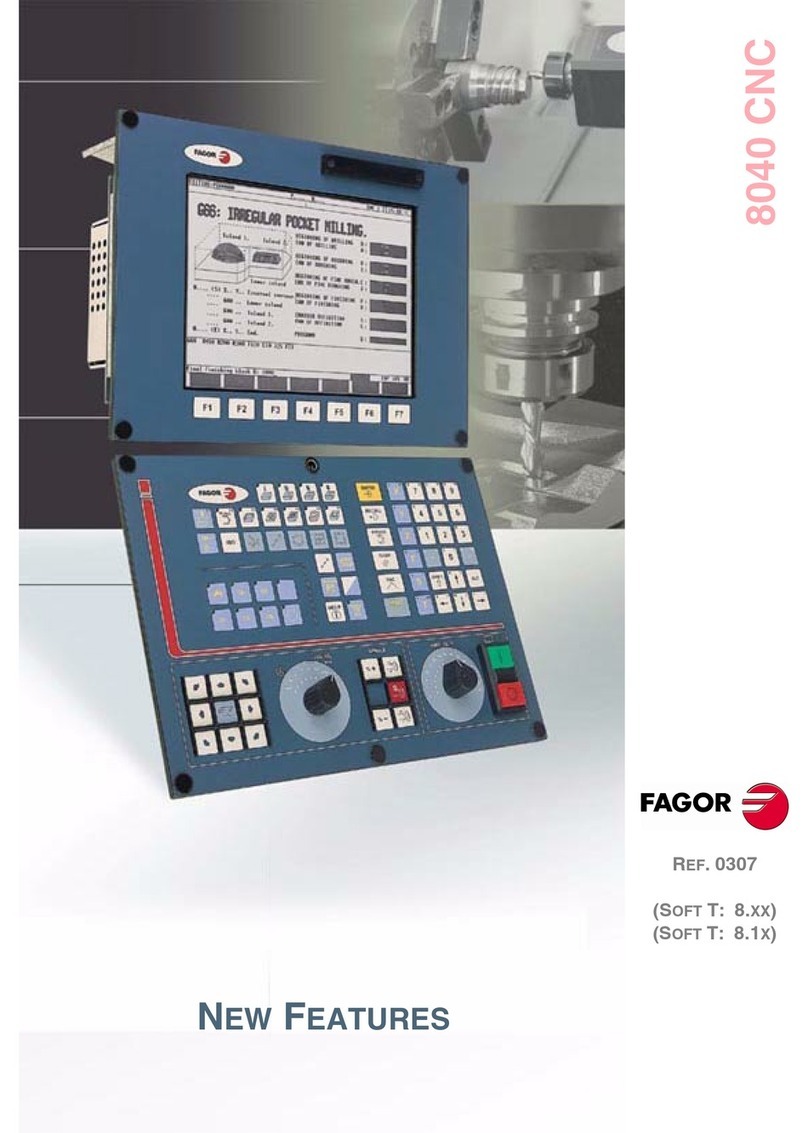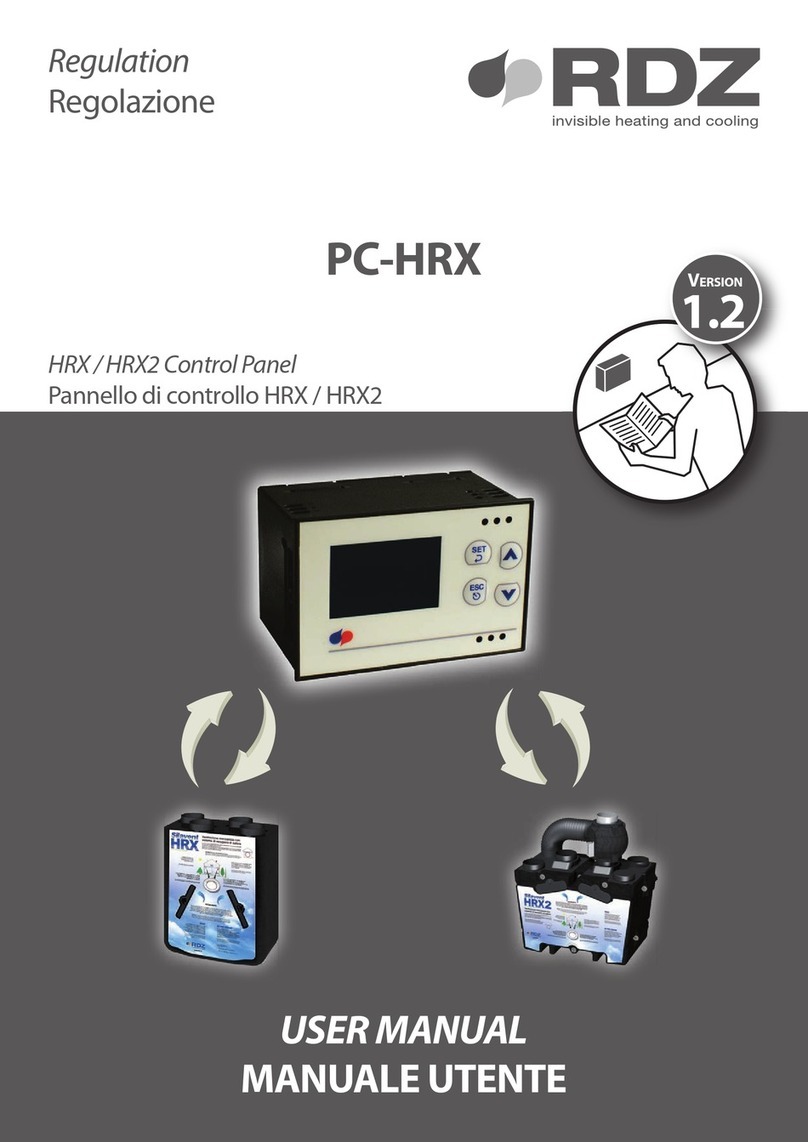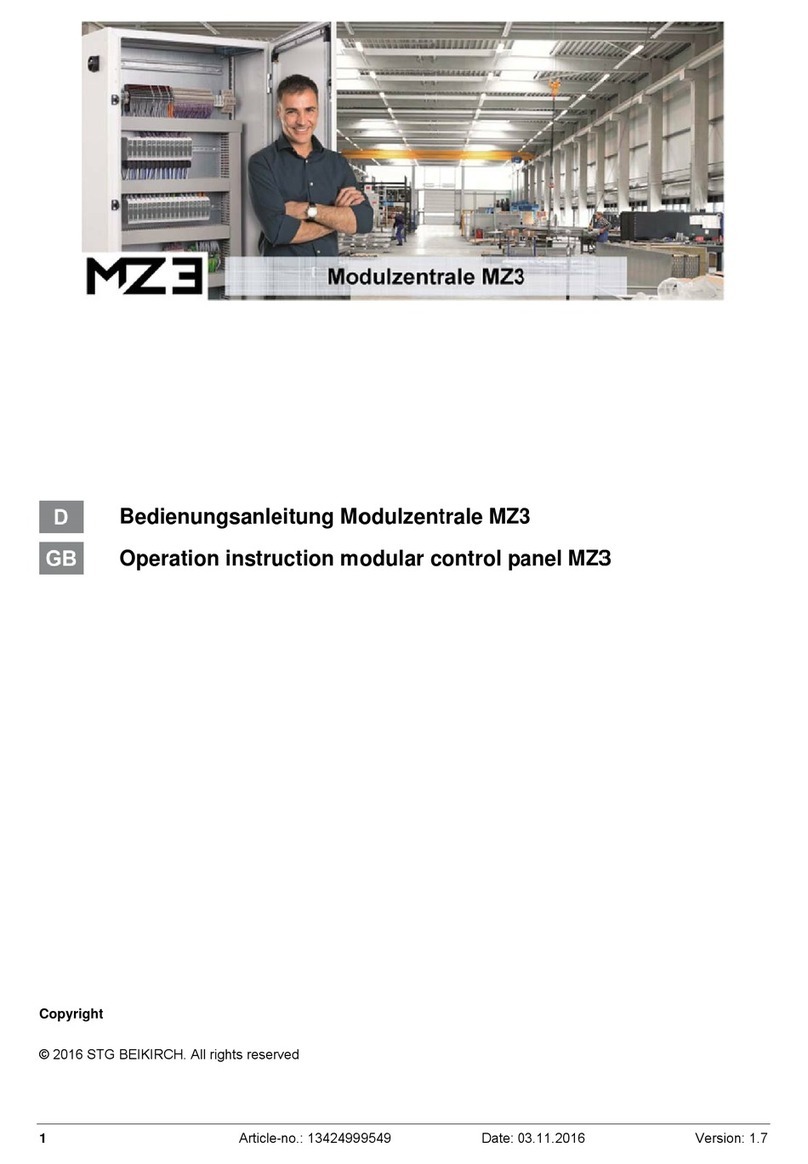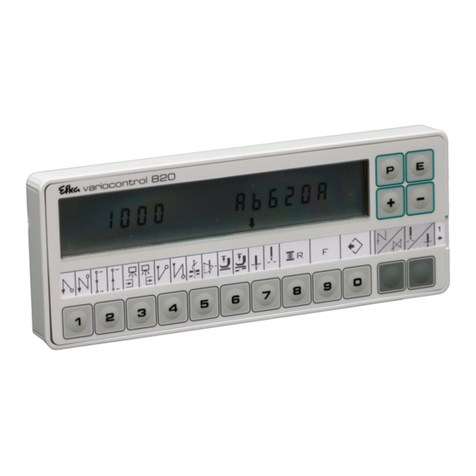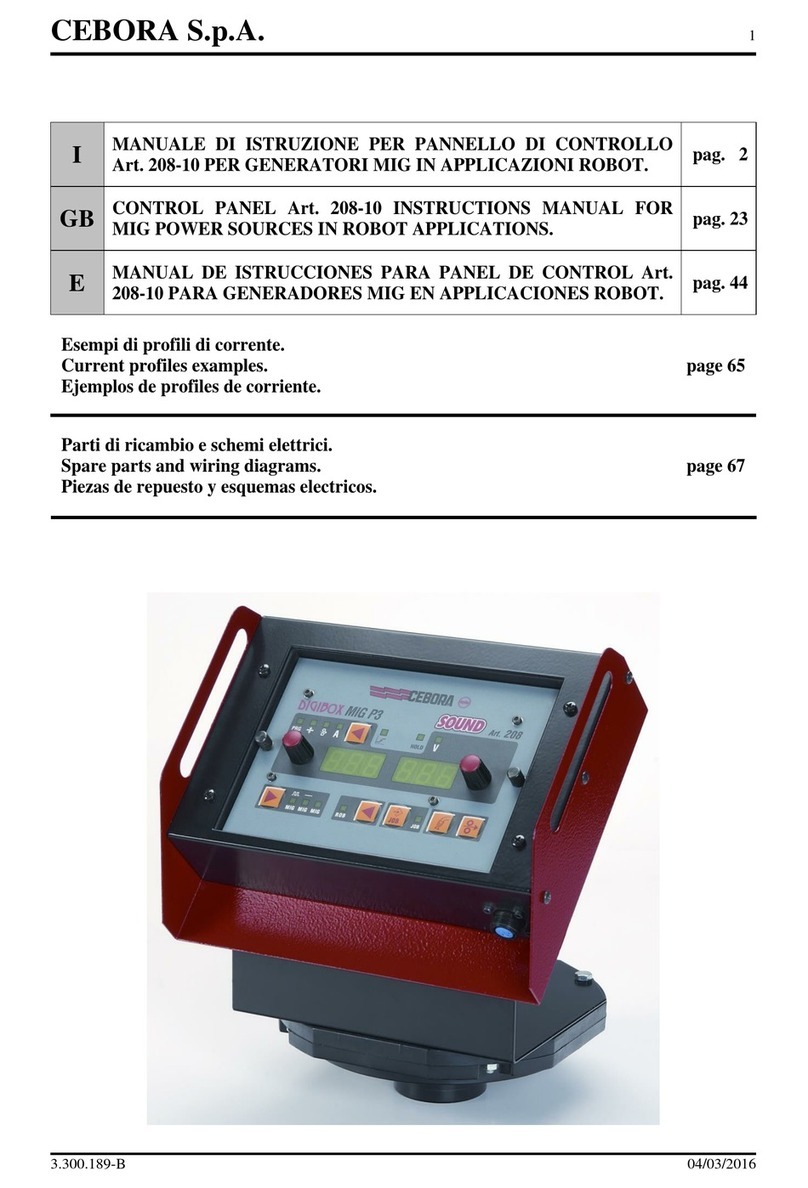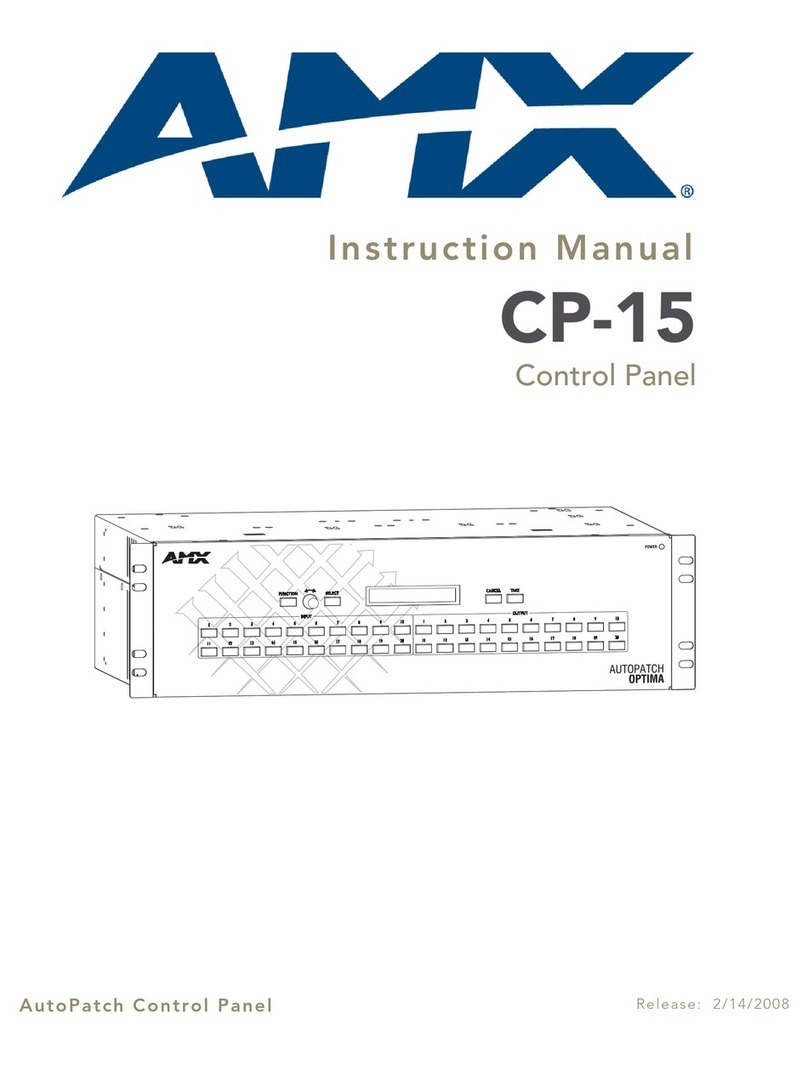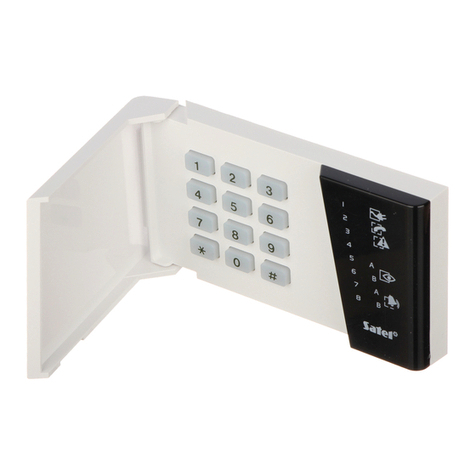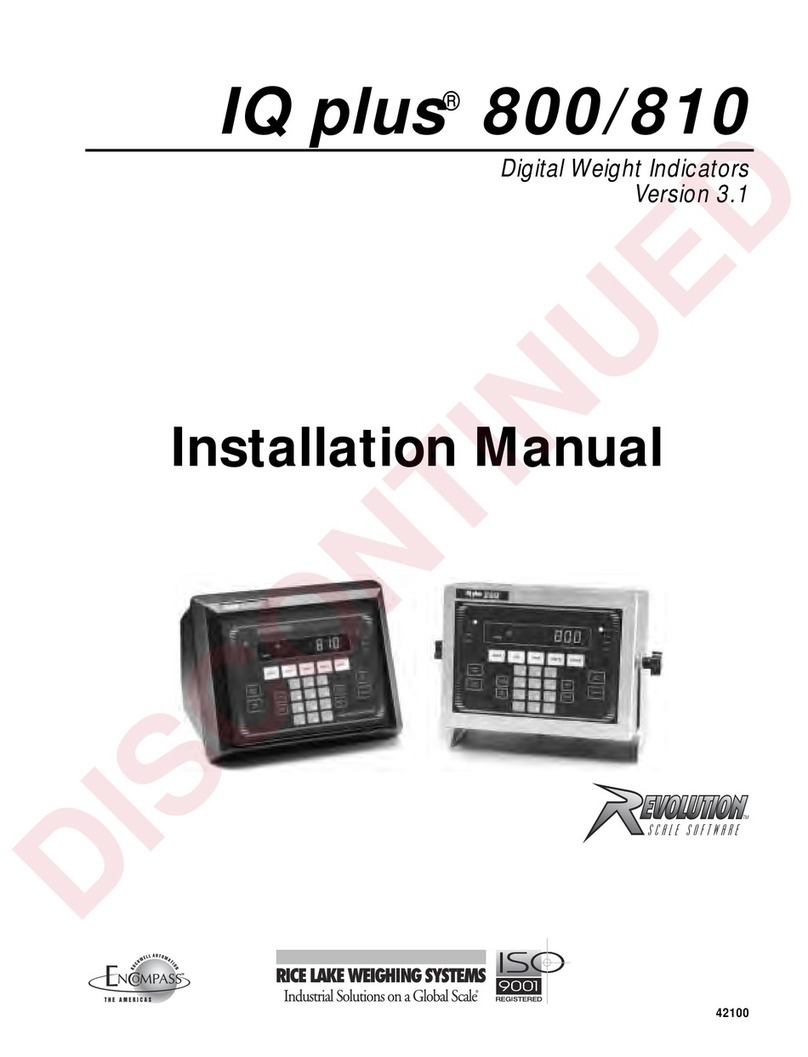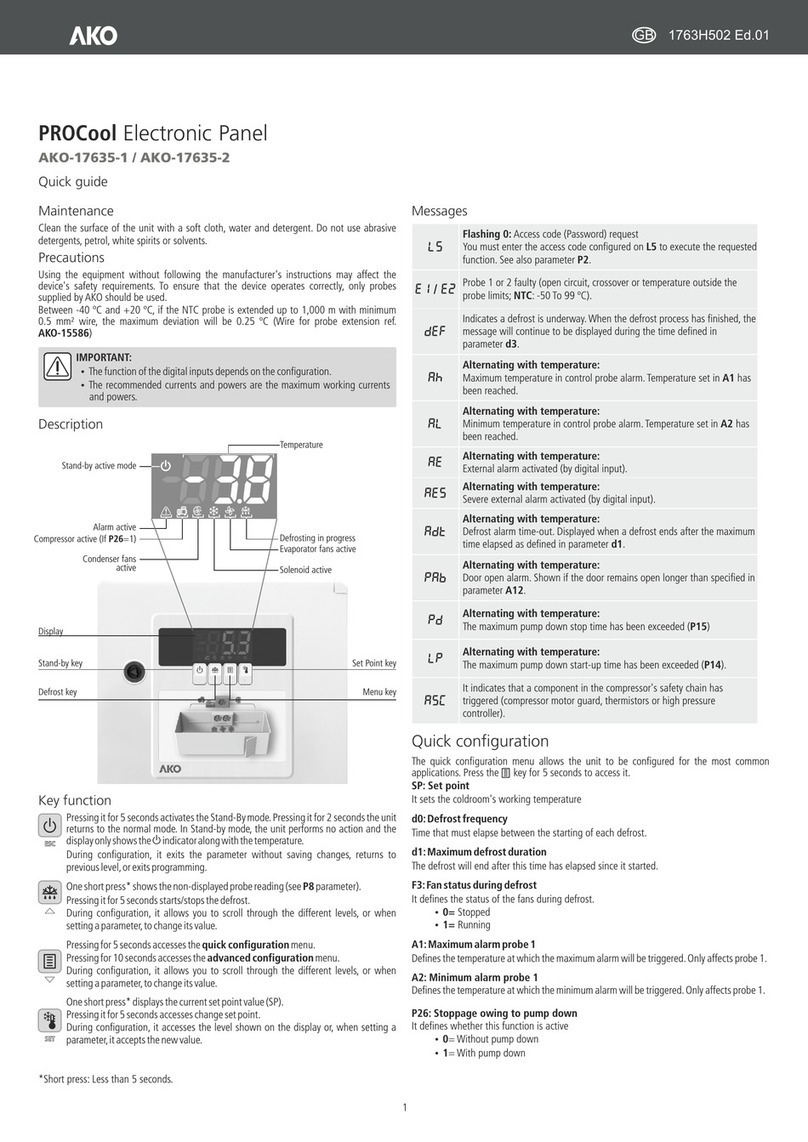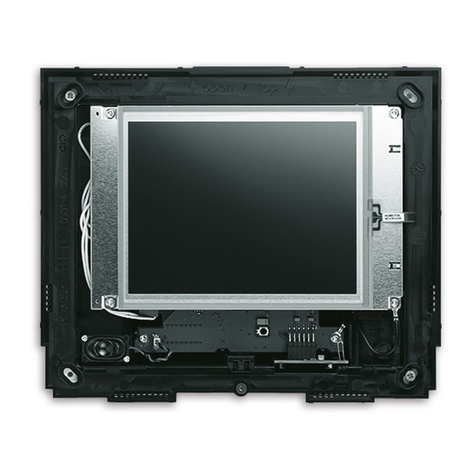-4-
1.2.3 DENYING ACCESS TO THE EDITOR MODE VIA PLCI
Machine parameter"P627(7)" indicates whether this feature is available or not.
P627(7)=0This featureis not available.
P627(7)=1This featureis available.
When using this feature, access to the editor mode at the CNC depends on the status of PLCI output O26, as well as
on the current conditions (protected memory, number of the program to be locked).
O26=0Free access to the editor mode (it is protected by current conditions).
O26=1Denied access to the editor mode.
1.2.4 SPINDLE CONTROLLED VIA CNC OR VIA PLCI
Fromthisversionon,thespindleanalogoutputmaybeseteitherbytheCNCorbythePLCI.Machineparameter"P627(7)"
indicates whether this feature is available or not.
P627(7)=0This featureis not available
P627(7)=1This featureis available
Setting the spindle analog output via PLCI
To do this, use the combination: M1956 - R156.
Register R156 sets the spindle analog output in units of 2.442 mV. (10 / 4095)
R156=00001111 11111111 (R1256=4095) = 10V.
R156=00011111 11111111 =-10V.
R156=00000000 00000001 (R1256=1) = 2.5mV.
R156=00010000 00000001 =-2.5mV.
In order for the CNC to assume the value allocated to register R156, one must activate mark M1956 as described
inthePLCIManual (section5.5.2. Writinginternal CNCvariables).
Spindle controlled either by the CNC or by the PLCI
The CNC may have two internal spindle analog outputs, that of the CNC itself and the one set by the PLCI.
Use PLCI output O27 to "tell" the CNC which one of them to output.
O27=0Spindle analog output set by the CNC itself.
O27=1Spindle analogoutputset by the PLCI (combination: M1956-R156).
1.3 READING INTERNAL CNC VARIABLES
From this version on, the PLCI and the PLC64 have access to more internal CNC information.
With the PLCI, there is no need to activate a mark to access this information. The CNC itself updates this information
at the beginning of each PLCI cycle scan.
With the PLC 64, the corresponding mark must be consulted every time a CNC variable is to be checked.
The CNC information now accessible is:
Real S in rpm (REG119 at the PLCI, M1919 at the PLC64)
Not to be mistaken with R112 which indicates the programmed Spindle speed (S).
Itisgiveninrpmandinhexadecimalformat.Example:S2487 R119=967
Number of the block in execution (REG120 at the PLCI, M1920 at the PLC64)
Itisgiveninhexadecimalformat.Example:N120 R120=78
Code of the last key pressed (B0-7 REG121 at the PLCI, Not available at the PLC64)
Not to be mistaken with register R118 which also indicates the code corresponding to the last key pressed,but-
-
When pressing a key, both registers have the same value; butthe data in R121 is only kept there for one cycle
scan whereasR118 keeps its value until another key is pressed.
When pressing the same key several times, (for example: 1111):
R121 will show code "1" four times (once per cycle scan).
R118 will always show the same value, thus not being able to tell whether the "1" key has been pressed once
ormoretimes.
The key codes are listed in the appendix of the PLCI manual.
